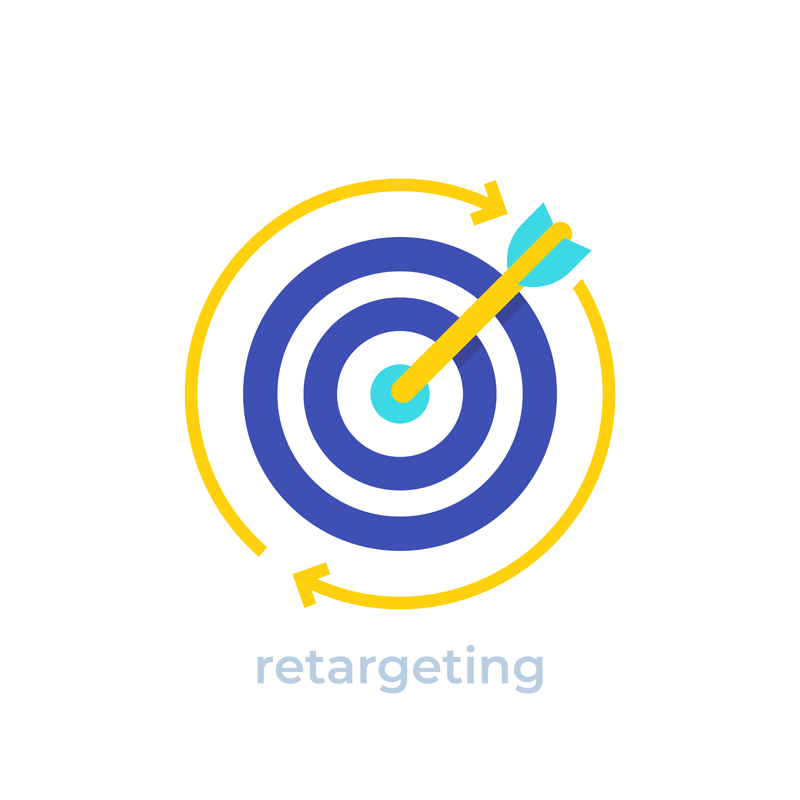What is Retargeting?

If you run an e-commerce store, you’ll know advertising is essential to drive people to your site. But what if they’re not ready to shop when the first visit your store? Or they don’t have time to complete a purchase? Data shows that 97% of people who visit your website leave without buying anything, and then they’re gone forever. Unless you can bring them back.
There where retargeting ads come in. Retargeting is a powerful marketing strategy that helps you to convert website visitors into customers after they’ve left your site. In this article, we explore the question: what is retargeting?
What is Retargeting?
Before someone invests in your product or service, they need to feel like they know your brand. To help customers make up their mind about buying from you, they need to hear your message a minimum of 7 times. Retargeting helps build visibility, allowing you to reach customers that have already expressed an interest in your brand. When you create retargeting ads, your adverts will display in the right place at the right time, helping to draw potential customers back into your website.
How Retargeting Works
Most retargeting ads use the Google Display Network. With this method, they can reach more than 90% of internet users across more than 2 million sites. Once someone visits your site, they’ll start to see your adverts while listening to music, reading an article or browsing other e-commerce stores. Your ads will remind them of your brand and bring them back to your site when they’re ready to buy.
For example, a shopper may browse your website but leave without putting anything in her basket. A few days later, she’ll start seeing ads for an item she viewed on your site, plus some other related products that she hasn’t seen before. She’s then reminded of your brand, intrigued by the new products, and returns to your store to make a purchase. This is an example of retargeting.
Basic and Advanced Retargeting
There are two main types of retargeting: basic and advanced. Basic retargeting engages the shopper by showing ads for the product they most recently looked at. Advanced retargeting does this too, but also goes several steps further. For instance, advanced retargeting delivers dynamic, personalised ads based on the products your viewers like. These may include an item that the customer hasn’t seen before, but is predicted to drive a purchase through product recommendation technology. Advanced retargeting uses identity matching to unify omnichannel shopping journey. This means that shoppers will see your ads across all connected devices, even if they only visited your store from their PC. Your ads will also be personalised with dynamic creative optimisation. This understands which combination of colours, layout and call to action will appeal to each shopper.
Static and Dynamic Retargeting
Static retargeting involves creating a set of adverts to be used depending on which page of your site someone visits. For instance, say you’ve developed a marketing campaign around a resource pack. You create 4 adverts that direct people to the resource pack. Each one is triggered when a customer visits a specific product page on your website. One advert may target people who look at the product, while another may target those who read an article on a topic similar to your resource pack. Static retargeting works best for B2B companies. It also works well when you want to target a certain type of follower, but not a specific individual.
Instead of using pre-designed ads, dynamic retargeting creates custom ads for each visitor. The process requires more sophisticated technology to analyse customer behaviours, tailor the advert based on individual preferences and determine the best time to show the ad to shoppers. Dynamic retargeting works best for those in the B2C commerce business with a large customer base or product catalogue. As the variables in a dynamic retargeting ad are too complicated to do manually, you’ll need to invest in a program or service to do the job for you. While this can be costly, the ROI of delivering personalised ads is well worth the investment. Data shows that 88% of marketers see a measurable improvement when using personalised marketing, with more than half of them reporting a lift of 10% or more.
Why Use Retargeting?
So, why should you use retargeting? There are many reasons why retargeting is an effective strategy. To start, it’s a great way to convert an already interested visitor. Whether the shopper was just browsing your site, or actually put a product in the basket, these are people who have expressed an interest in your brand. This means that the effort it will take to convert them is much less than someone who’s never visited your website. A smart retargeting ad can help you reach potential customers at the right time, with the right product information for a sale.
Retargeting also reminds shoppers of your brand. Studies show that shoppers need to see an ad several times before they buy the product. This is especially true today, where there are so many distractions along the path to checkout. Retargeting gently reminds shoppers of your product or service and reignites their desire to purchase.
Unlike many marketing strategies, retargeting is a cross-device solution. Today, most shopper move across screens. To keep up with them, your adverts need to do the same. Retargeting ads can match a shopper across mobile, desktop and apps, allowing you to reach them wherever they are. Some tools can even use offline data to inform the campaign, like stopping the ads because a shopper bought the product elsewhere.
So, what is retargeting? Essentially, it’s a powerful marketing strategy that helps you to convert website visitors into customers after they’ve left your site. If you’re looking for a new way to boost your sales, retargeting is certainly worth checking out.


